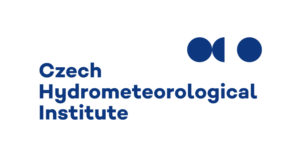Description
Czech Hydrometeorological Institute (CHMI) is a central state institute of the Czech Republic in the fields of air quality, meteorology, climatology, hydrology, and water quality. The objective of CHMI's activity in the above fields is to establish and operate monitoring stations with the aid of a telecommunications networks. The related activities include building national networks for monitoring the atmosphere and hydrosphere, to assess observations, measurements and monitoring data and to create and maintain databases in a unified information system, to provide information to the public and to report to regional and national authorities/ institutions as well as to the EU bodies. CHMI consists of five divisions, including Meteorology and Climatology, Air Quality, and Hydrology Divisions.
Competences and capabilities
The CHMI is authorized by the Ministry of the Environment to operate the State air quality monitoring network of the Czech Republic. It is also authorized to ensure in the long term the operation and development of the Air Quality Information System including the national air quality database. Among all of the core products of the Air Quality Information System Department, air quality maps play a particularly important role. The maps are constructed both using near real time data (up-to-date) and annual average data, with the underlying methodology based on the data fusion of the monitoring, modelling and other supplementary data.
Major Space Projects & References
SAMIRA (Satellite based Monitoring Initiative for Regional Air quality) was a project funded by the European Space Agency. In the project, seven organizations from four counties (Norway, Czech Republic, Poland, and Romania) were involved, including CHMI. The overall goal of the SAMIRA project was to improve regional and local air quality monitoring through synergetic use of data from present and upcoming satellites, traditionally used in-situ air quality monitoring networks and output from chemical transport models. The examined pollutants were Particular Matter (PM10, PM2.5), Nitrogen Dioxide (NO2), and Sulphur Dioxide (SO2). The time steps were hourly, daily, and annual data.
Space Related Equipment, Labs & Certificates
N/A
